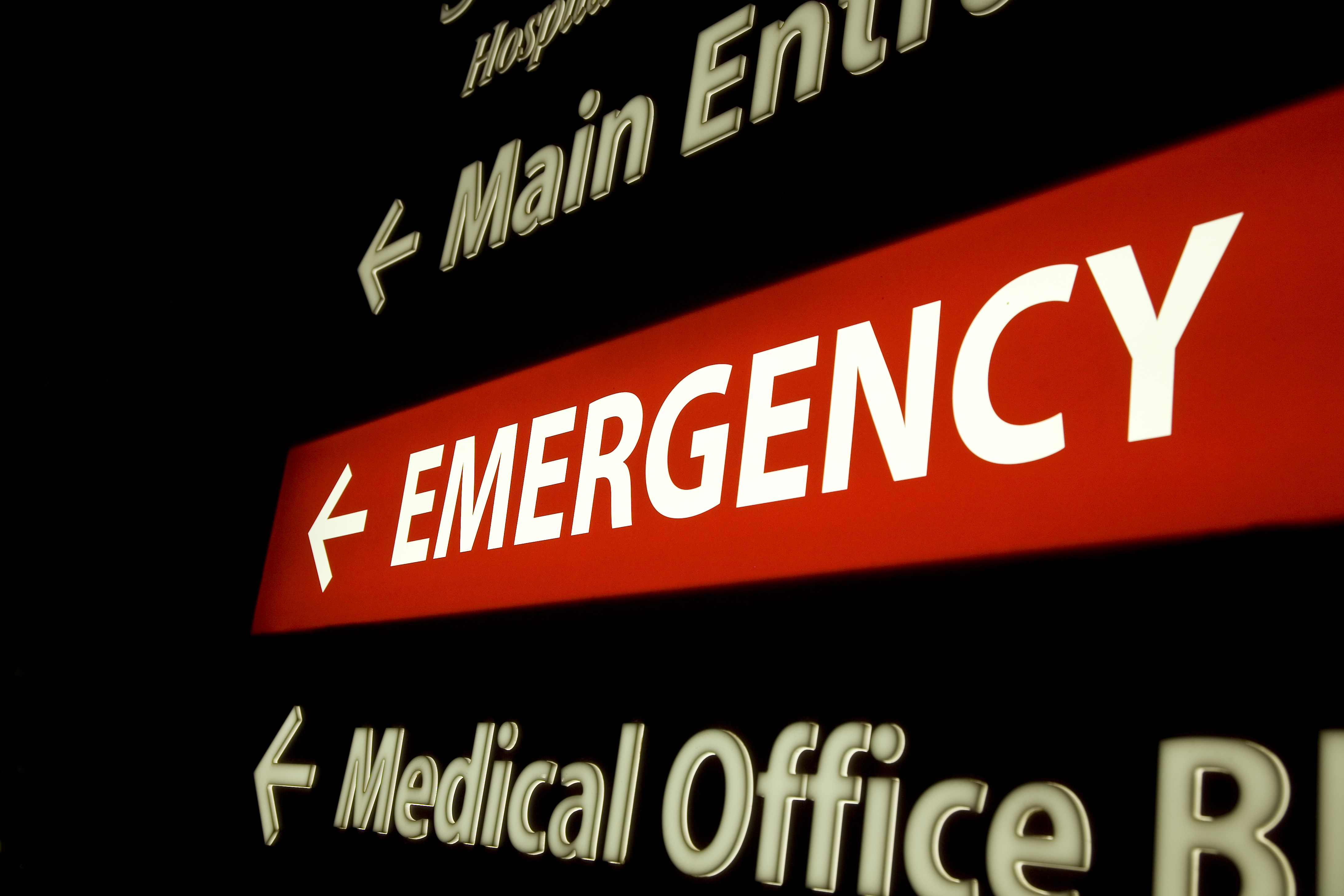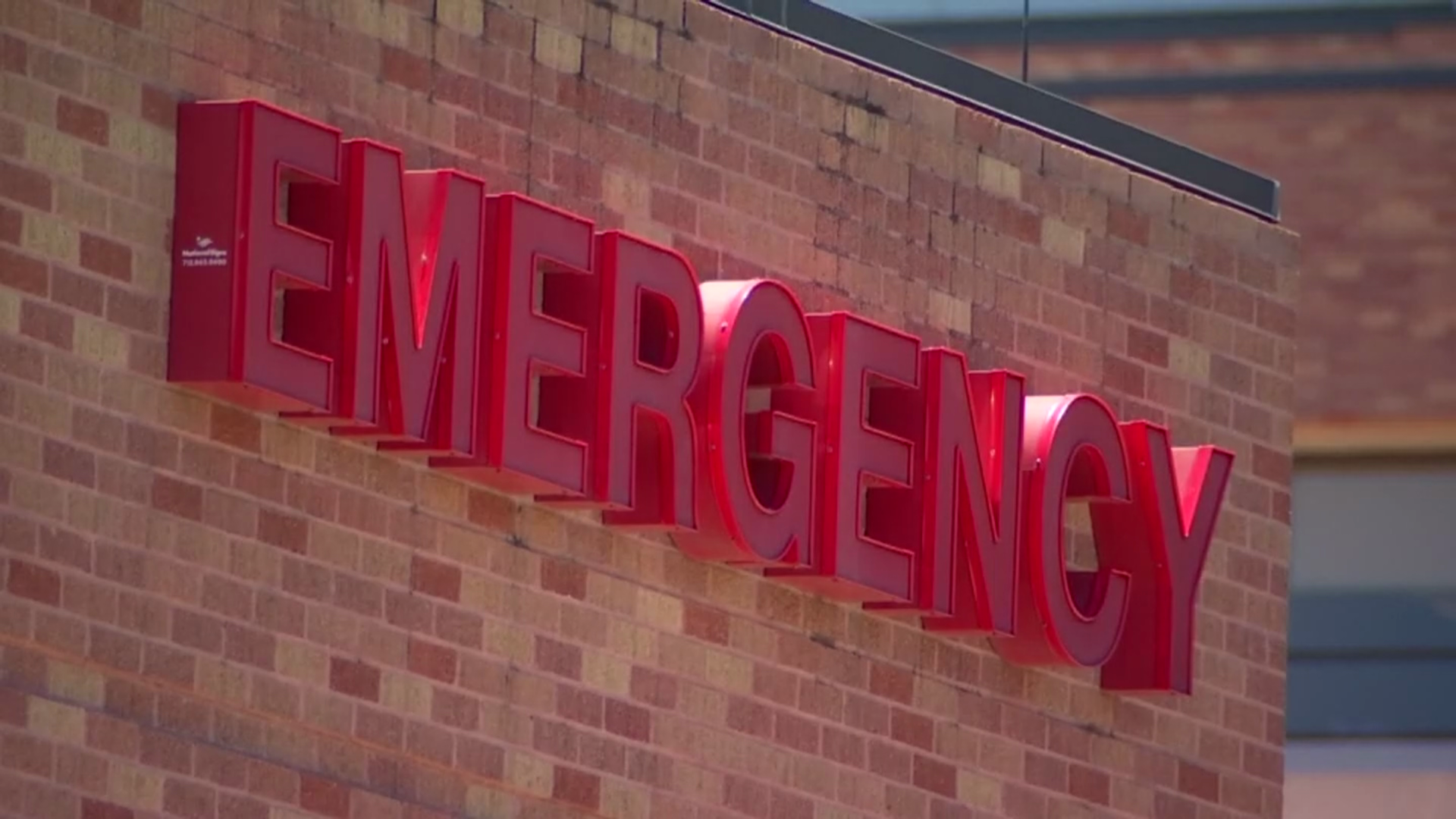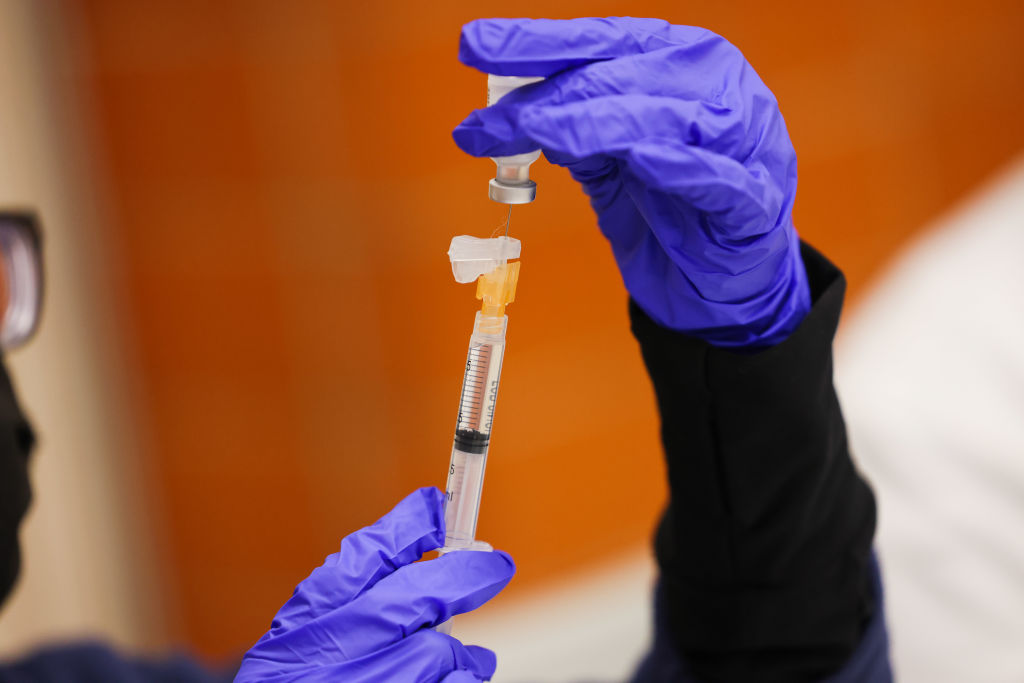What to Know
- Gov. Kathy Hochul continues to push vaccinations and testing as the state battles its worst COVID-19 wave in a year; still, she said Friday she was hopeful NY is seeing the first signs of the start of a plateau
- Hospitalizations are the highest since April 2020 but don't tell the whole story; 37% of admitted NY COVID patients have no symptoms and one CEO say it's "very, very rare" to see a boosted patient admitted
- In New York City, half of hospitalized patients diagnosed with COVID were admitted because of the virus; the other half were admitted for something else and found to have COVID during routine testing
A day after New York Gov. Kathy Hochul shared optimism over COVID case trends showing a slowing rate of growth, the state experienced another record-breaking day with 90,132 new positive cases reported Saturday.
Hochul reported 82,094 new COVID cases on Friday, which was a drop of a few hundred from the previous day and about 3,300 positives shy of the old single-day pandemic record of 85,476 she reported on New Year's Day.
The 90,132 new positives account for roughly 21% of a whopping 425,782 total COVID-19 tests taken across the state. More than one in five New York COVID tests are coming back positive these days, and the city's seven-day rolling average for positive tests is currently one in three.
Get Tri-state area news delivered to your inbox.> Sign up for NBC New York's News Headlines newsletter.
"Our vaccination rate among children is still too low. parents and guardians don't delay in getting your children vaccinated and boosted, if eligible. It's safe and widely available. This is the one of the best ways to keep our numbers down, as well as wearing a mask and staying home if sick," the governor said in Saturday's daily COVID release.
Also on Friday, the state revealed pediatric hospitalizations for COVID-19 increased eight-fold in New York from early December to late month, with the vast majority of those kids unvaccinated.
The new report follows on an ominous Christmas Eve advisory to pediatricians, warning that hospitalizations were quickly on the rise as the omicron variant tore through the state.
Friday's report indicates the situation only continued to get worse after that. In the week that ended Jan. 1, there were 571 pediatric COVID hospitalizations statewide, the New York State Department of Health said, up from 70 just weeks previously.
Of those admitted, 91% of kids ages 5-11 were unvaccinated, as well as 65% of kids ages 12 to 17.
But overall, more than half of the hospitalizations were in kids ages 4 and under, who aren't eligible for vaccines yet. Kids under age 4 represent about a quarter of all kids in the state, meaning they're being hospitalized at about double their proportion of the population.
In New York City alone, COVID hospitalizations in those 18 and under increased 17-fold, more than double the growth rate for the population as a whole.
Hospital concerns have taken a renewed focus in upstate New York, with the state announcing Saturday the suspension of elective surgeries at 40 hospitals. The overwhelming majority of impacted hospitals reside in the Mohawk Valley, Finger Lakes and Central New York regions, according to the state announcement. No hospitals in New York City were added to the list.
Those hospitals in the state's "high risk regions" must postpone the surgeries for at least two weeks while officials track the latest incoming data and hospital capacity.
“We will use every available tool to help ensure that hospitals can manage the COVID-19 winter surge," Acting State Health Commissioner Dr. Mary T. Bassett said Saturday.

The head of the CDC, meanwhile, said Friday she doesn't think the United States has hit omicron's peak yet. But that could happen sooner than expected if the numbers in New York this week are any indication of what might come next.
A quick look at New York City's case trends shows what appears to be a downtick in new cases, but the data is behind by four days. That blip on the seven-day average could reflect lower COVID testing numbers around the holidays rather than the first indications of omicron's decline -- or maybe not. Time will tell.
At the same time new cases slow from the exponential increases -- doubling daily in New York City at times -- the two lagging indicators, the ones about which officials are most concerned, hospitalizations and deaths, are rising considerably.
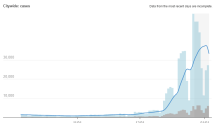
That has happened in nearly every wave of the pandemic so far. The governor reported 154 new COVID deaths on Saturday, one less than the day before which saw the highest single-day toll since the mass vaccination rollout.
Hospitalizations stand at 11,843 statewide as of Saturday, the highest total since April 28, 2020, and mark a nearly 300-patient increase over the last day. Nearly half of current admissions are in New York City.
"It's still a number that's very high. If this correlates properly to our number of cases then hospitalizations should start to see the beginnings of a plateau," Hochul said.
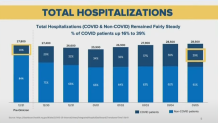
The balance of COVID patients in New York hospitals as a share of the total has doubled since just before Christmas, state data shows, but those ratios alone do not tell the whole story. Forty-two percent of hospitalized COVID patients weren't admitted because they were positive for COVID, state data shows.
They were admitted for another illness, tested as part of the routine admissions process and found to be positive for COVID. COVID still accounts as the primary diagnosis for hospitalized patients with the virus across the state (58% vs 42%), but a high relative share of people in the hospital with COVID didn't go there because of it. That suggests the milder nature of omicron versus earlier variants, especially -- again -- when it comes to people who are fully vaccinated.
Manhattan emergency room Dr. Craig Spencer touched on that element in a lengthy Twitter thread earlier this week, when he said that with omicron, "people are getting really sick in a different way" -- as in they come to the hospital because they're sick from an underlying illness -- and then they got COVID on top of that.
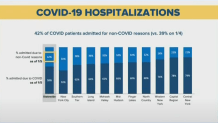
It's not an all-out wave of omicron patients, he and others say. And that's playing out in different ways across New York.
New York City, for example, where the split is most notable at 50-50, has the second-highest adult full vaccination rate (84.3%) of the state's 10 regions behind only Long Island (86.6%), where one of the two county executives has been warring with the state over mask and other enhanced COVID protocol as of late.
Vaccination rates among children, whose hospitalization rates soared statewide in New York last month, vary more widely. More than 19.4% of NYC kids aged 5-11 are fully vaccinated, as are 71.8% of kids aged 12 to 17. On Long Island, those numbers are 16.2% and 64.6%, respectively.
Hochul called that a "very interesting snapshot" of what she's seeing across the state. Thirty-seven percent of current state COVID hospitalizations are asymptomatic, the governor added.
More Coverage
Ultimately, fatalities will likely rise as a default consequence of the soaring hospitalization rates, but the milder nature of omicron vs. delta, along with the power of vaccinations to prevent severe illness and death, should mitigate the increases. And some of those who die may not be dying primarily of COVID at all.
Public health experts have said they don't expect this latest COVID wave's peak until February, though they acknowledge the virus' unpredictability.
The head of the CDC says there certainly could be a rapid down-surge instead of a slow easing of cases, given how omicron has played out in countries that it hit first, like South Africa. But she doesn't think the U.S. is at that point just yet.
"The number of cases are rising faster than the number of hospitalizations and deaths, although we’re now starting to see the number of hospitalizations rise as well," Dr. Rochelle Walensky told NBC's "TODAY" in a Friday interview. "The way it has peaked in other countries, in South Africa, it has come down rapidly as well, but I don’t believe we’ve seen the peak yet here in the United States."
"I will say that our hospitals right now are full of people who are unvaccinated and that you are 17 times more likely to be in a hospital and 20 times more likely to die if you’re unvaccinated compared to if you’re boosted," she added. "There’s a lot we can do in this moment, getting vaccinated, getting boosted. We have 99% of our counties in high transmission, wear your mask in public indoor settings."

